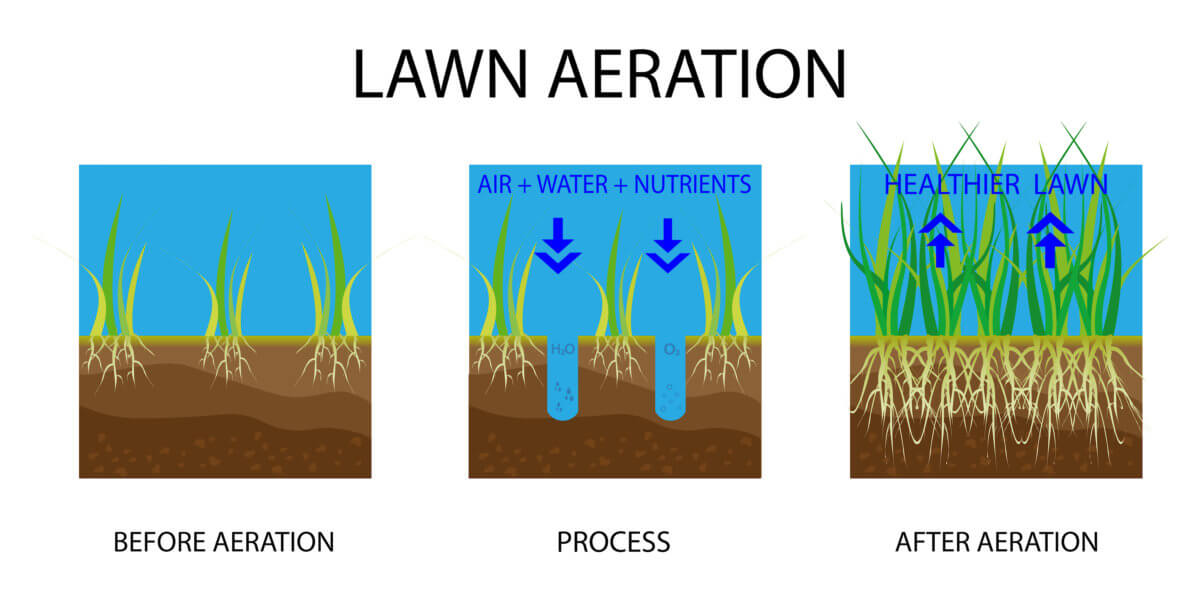
When and How to Aerate Your Lawn
To keep your Florida lawn at its best over the years, it is important to aerate the soil periodically. Not only is it healthy for your grass and soil, but it also makes your lawn more efficient at absorbing water and nutrients. Here’s what you need to know on how to aerate your lawn most effectively.
Why Lawn Aeration Is So Beneficial
As your lawn grows, it develops a sturdy root system to extract water and nutrients from the soil. When the temperature drops in the winter, albeit not as significantly here in Florida as in many other parts of the country, many types of grass go dormant. This means that they essentially stop growing during the winter, waiting for the warm weather to return in the spring. Then, when reentering the growing phase, the lawn sheds much of its root structure in order to grow new, stronger roots.
This is where aeration care comes in to plan
Over time, the soil and underlying roots can become compacted, making it difficult for the grass to gain access to the water and nutrients it needs in order to thrive. Aeration pulls up plugs of soil and root mass, leaving holes in the ground where air, moisture, and nutrients can better reach the fresh root growth.
In addition to helping the roots, aeration also helps with the natural decomposition of the thatch layer in your lawn. Each time you mow, small pieces of cut grass stay in the lawn, creating a protective layer to shelter roots and young grass blades from the harsh sun. However, if the thatch becomes too thick, it can begin to suffocate your lawn. As the aeration plugs break down, they accelerate the decomposition process, keeping thatch at the appropriate level and providing a source of nutrients for the lawn.
Learn When to Aerate Your Florida Lawn
The exact aeration schedule you should follow depends on the type of grass in your lawn. If you have turf grass, like Zoysia, Bermuda, or St. Augustine, the best time to aerate will be between mid-spring and early summer. For perennial grasses like Kentucky Bluegrass or Ryegrass, mid-spring and early fall are your best aeration times.
If your lawn and soil are generally healthy, you can likely get away with aerating just once a year as your lawn reenters its growing phase. For high-traffic areas or lawns with poor-quality soil, you may need to aerate twice a year or more to help restore grass and soil health.
Learn How to Aerate Your Grass
You have several options available to you for aerating your lawn. If your lawn only needs light aeration, you can go over your lawn with a pitchfork, pressing the tines down into the soil at regular intervals. This will create holes where air, moisture, and nutrients can better reach the roots. However, it won’t pull up plugs of soil and roots to help the thatch decompose. For that, you’ll need a core aerator.
A core aerator punches down into the ground, pulling up the plugs of dirt and leaving them on the surface of your lawn. You can typically find this type of equipment at your local hardware or garden supply store. Many stores offer rental services, saving you from having to purchase the equipment on your own. Of course, you can also hire a landscape service or lawn care provider to handle the hard work for you.
Whichever method you choose, it is always best to wait to fertilize your lawn until after the aeration is complete. This way, your lawn will have the best chance of effectively absorbing those valuable nutrients. Be sure to give your lawn plenty of water after aeration as well to encourage it to begin to expand its new root structure.
Repair Damaged Lawn at Home With Fresh Sod
In some cases, even proper aeration and excellent care may not be enough to restore your lawn to optimal health. For these scenarios, fresh sod can fill in any bare patches and make your lawn look lush and green once again. The Duda Sod team is here to help with all your sod needs, so don’t be shy about reaching out to us with any questions you may have. We’re always happy to help!